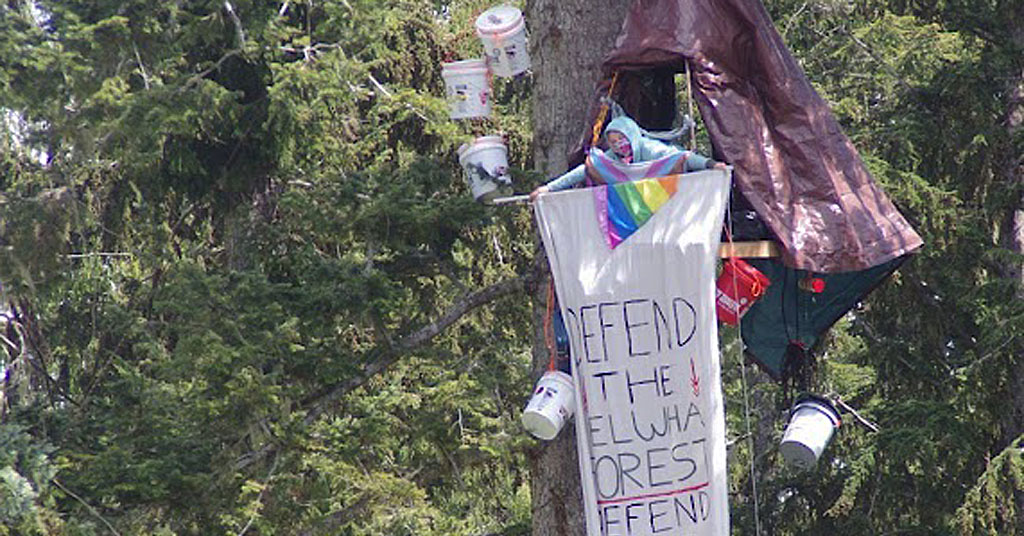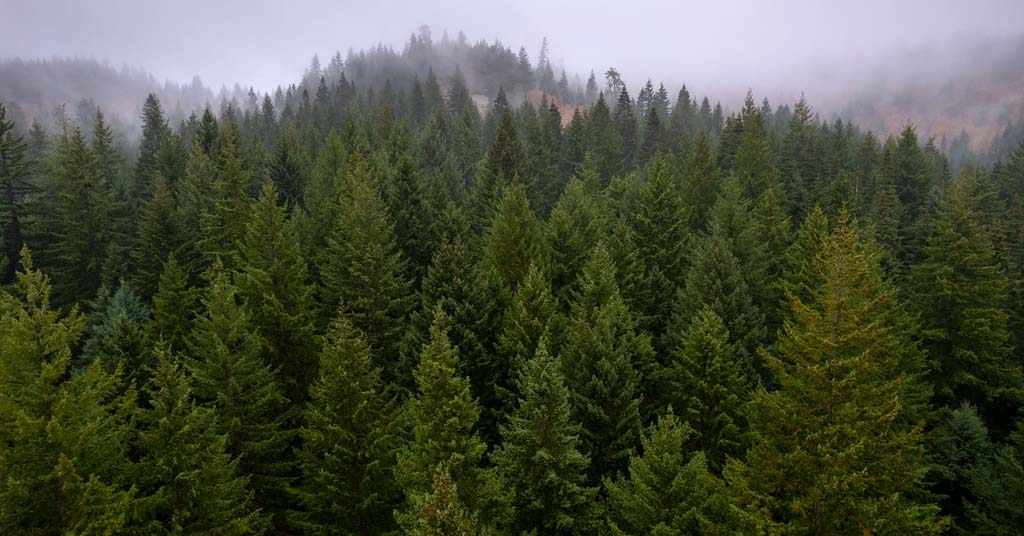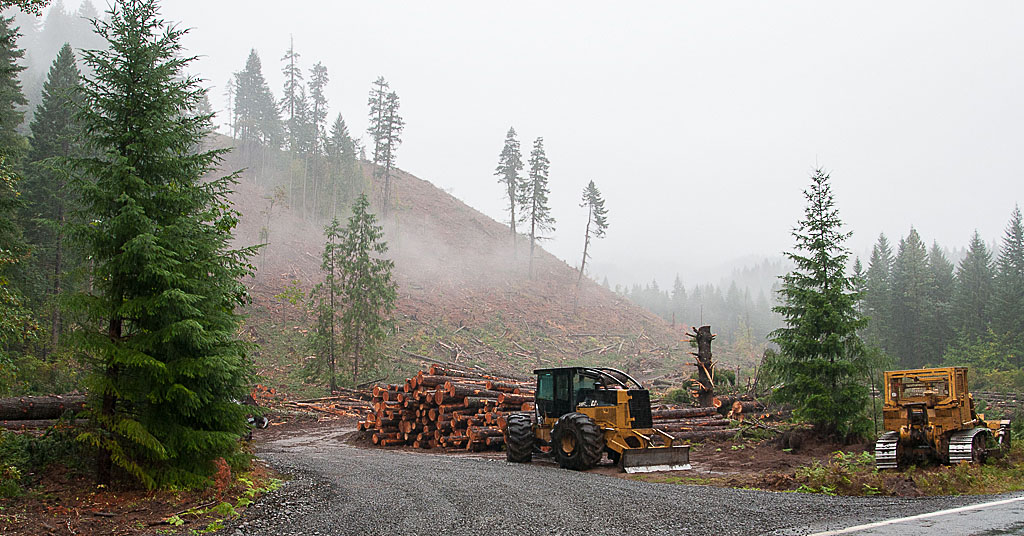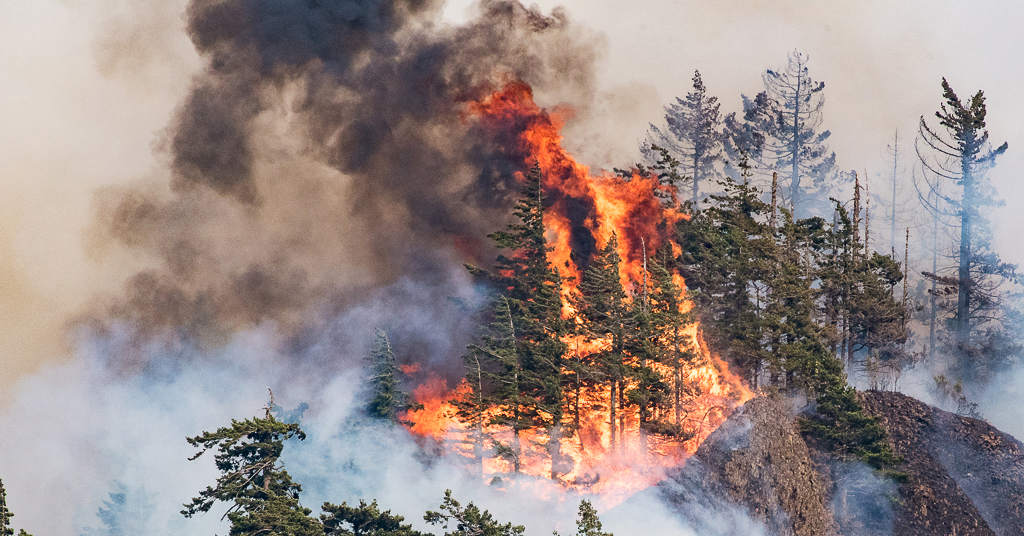A small group gathered over the weekend to protest clearcut plans by SDS Logging Company in the White Salmon River area
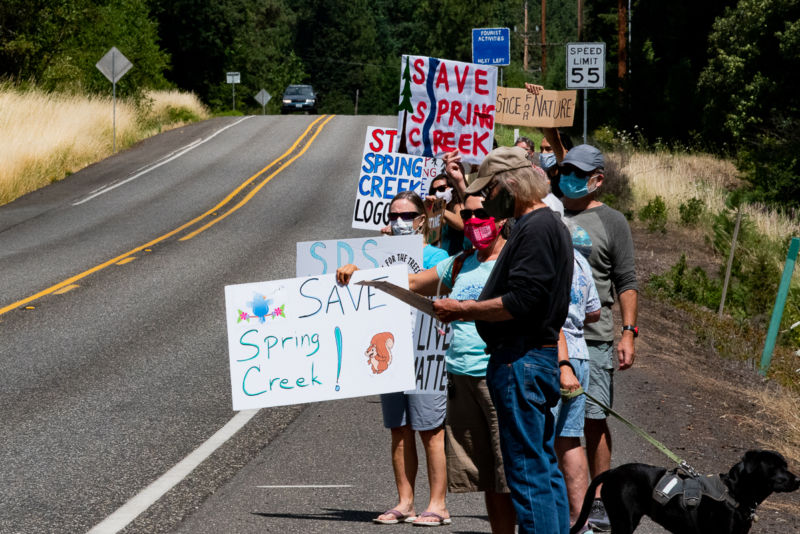
Local stand: Friends of the White Salmon River quickly rallied after an application to clearcut was filed. Photo by Jurgen Hess
By Jurgen Hess. July 13, 2020. Twenty-three protesters in COVID masks waved signs at passing cars on Washington SR141 at Husum in Klickitat County on Sunday morning. “Justice for Nature” and “Stop Logging Save Spring Creek!” typified the sentiment.
Friends of the White Salmon River organized the event in opposition to a plan by the SDS Lumber Company to clearcut 86 acres of forest along Spring Creek within the White Salmon Wild and Scenic River area. The application also seeks permission to construct four new spur roads totaling just under half a mile in length.
In May, Columbia Insight reported on local suspicions that the company was preparing to log the area. Those suspicions have been validated.
On July 7, SDS and landowner Stevenson Land Company filed an application with the Washington Department of Natural Resources to log the area. Local reaction was swift.
“The area was once a forest, (now) it’s surrounded by clear cuts with leave trees for stream protection blown over,” said protestor and area resident Cheryl Shipp, noting it’s the job of the U.S. Forest Service to protect the river corridor.
“The Forest Service just shifts (responsibility) to someone else,” added Shipp.
Protestor and biologist Bill Weiler described the proposed logging site as “a riparian area with raptors, trees shading a Class A stream and a popular recreation area.”
Friends of the White Salmon River president Pat Arnold said the Forest Service should negotiate to stop the logging and buy the land. She stopped short of calling for legal action.
“The Forest Practices Act has no State Environmental Policy Act or environmental review (obligation),” she said.
At least one Black Lives Matter sign found its way into the protest.
“People of color have been marginalized and now so has this natural area. Our community needs to protect this area,” said Lyle resident Kenzi Stasiewicz, who wore a shirt emblazoned with the sloan “Save the Salish Sea.”
DNR forester Whitney Butler is taking public comments on the SDS logging application until July 20. Comments can be sent to Whitney.Butler@dnr.wa.gov.




